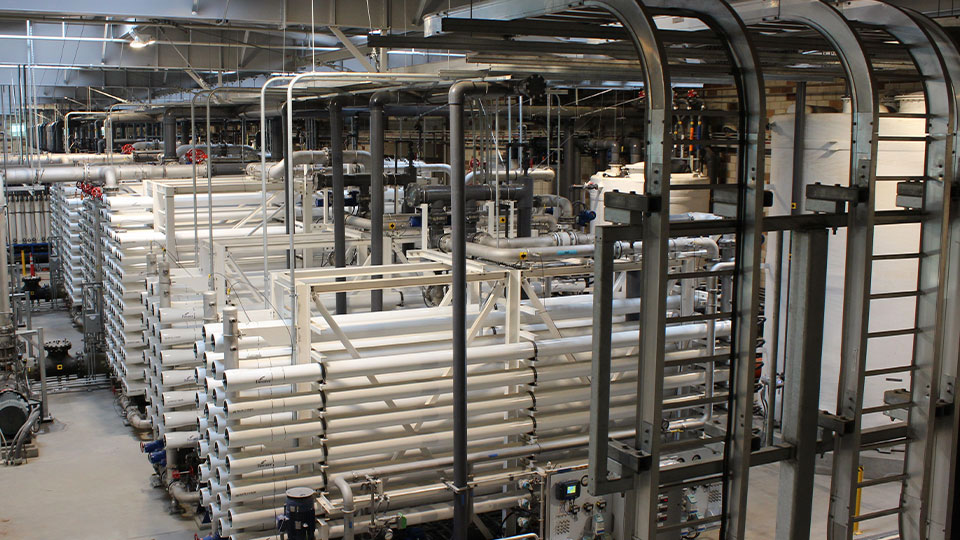
This article was originally published in the Florida Water Reuse Journal.
The process of desalination with membrane technology was first used to make potable drinking water from seawater in the 1960s. Since then, membrane treatment has benefited from several technological advances in membrane process design. These advances have made membrane treatment a more affordable technology for many water utilities. This is of great importance, as diminishing water supply resources and increased regulatory limitations are leaving water utilities with a diminishing number of alternatives.
As alternative technologies are pilot tested for potable reuse, which focuses on the treatment of wastewater and reclaimed water to drinking water quality standards, one technology that has continuously proven to produce high quality purified water is membranes. Although their cost from both a capital and operational standpoint has steered utilities to investigate other alternative technologies, their persistent trend in water reuse—in not only one, but in two technologies in the multiple-barrier treatment approach—proves that their resiliency for treatment of adverse water sources will continue to provide solutions for water utilities seeking alternative water supplies. This will only continue to increase the economic viability for membrane treatment as the demand for robust treatment increases.
Jennifer and James discuss three representative case studies displaying a variety of membrane technologies that have been applied in potable reuse demonstration studies in Florida and their performance against constantly varying reclaimed water quality. These membrane technologies include ultrafiltration, reverse osmosis, and nanofiltration membranes in a variety of different application types—submerged, pressurized, gaseous hollow-fiber, low pressure, and high pressure.
About the authors
Jennifer Ribotti
Jennifer Ribotti’s expertise includes drinking water treatment, potable reuse treatment, facility hydraulics, membrane treatment technology, and pilot and demonstration design and operation.
Her experience across the United States includes the planning, design, and construction administration of drinking water treatment facilities, with emphasis on membrane treatment technologies for drinking water and alternative water supplies, as well as chemical feed systems, transmission mains, water quality characterization and testing, wastewater lift stations, and gravity sewer systems. With a decade of expertise, she is an active member in the Southeast Desalinating Association, American Water Works Association, Water Environment Association, and WateReuse. Jennifer is a registered Professional Engineer in Florida.
James Christopher
James Christopher is Tetra Tech’s practice leader for water treatment and has more than four decades of experience in defining, evaluating, and implementing solutions to the most challenging water quality problems.
His expertise includes water chemistry and water infrastructure design, with special emphasis in wastewater treatment; effluent reuse, utilization, and disposal; water resources; reverse osmosis and nanofiltration; granular activated carbon; pumping system analysis and station design; facility planning; and construction administration. James is a registered Professional Engineer in Florida, Georgia, and Texas.